The Eighth Air Force was still licking its wounds from the brutal raid on Bremen (October 8, 1943) and the long, exhausting raid on Marienburg (October 9) when it received another mission order for the very next day. The target would be Munster. The men were worn out, their ranks severely depleted due to the losses sustained in the previous two raids. Nevertheless, they rose again early on the morning of the 10th for a preflight briefing. That morning, the men of the Mighty Eighth were in for a bit of a shock when they heard their target for the day. In most of the raids flown by the Eighth to this point, the targets had all been industrial or military targets—ball-bearing factories, fighter-assembly plants, and the like. But October 10 was different. The target for the 10th was people—the city center of Munster.
The Eighth Air Force had prided itself on not targeting civilian populations. Its crews didn’t set out on “city busters” like the RAF did at night. Its targets were military targets attacked with precision, not indiscriminate bombing of civilians. The briefing officer of the 95th Bomb Group relayed a change in tactics. “Unlike all previous military and industrial targets attacked to date by the Eighth Air Force, today will be different—very different,” he said. “Today you will hit the center of that city, the homes of the working population.” The aiming point, the briefing officer said, would be the steps of the medieval cathedral. According to the plan, the B-17s would arrive over their target at high noon, the exact time Sunday mass let out at the cathedral. To many of the men in the briefing rooms across East Anglia, the news was shocking. John Keema, a bombardier with the 390th Bomb Group said, “That really didn’t sit well with the crews. It was a totally different concept from what we were always taught. I wondered, ‘What the hell are we doing?’” Ellis Scripture, lead navigator in the 95th Bomb Group and a deeply religious man, questioned the order. He approached his commanding officer and said he was very reluctant to fly this mission and explained his reasons. Colonel John Gerhart responded, “Look Captain, this is war—spelled W-A-R. We’re in an all-out fight; the Germans have been killing innocent people all over Europe for years. We’re here to beat the hell out of them . . . and we’re going to do it.” When threatened with court-martial if he refused to fly, Scripture reluctantly agreed and flew his mission.
Other men had different reactions than Keema and Scripture. Major John Eagan of the 100th Bomb Group was ecstatic at hearing the order. When he heard the target he found himself cheering. He said, “Others who had lost close friends in the past few raids joined in the cheering because here was a chance to kill Germans, the spawners of race hatred and minority oppression. It was a dream mission to avenge the death of a buddy.” The Eighth Air Force stated that the reason for the target was the fact that a large portion of German rail workers lived in Munster, and as a large rail city Munster was ripe for bombing. Why the steps of the cathedral were chosen as the aiming point—and at noon on Sunday—was not explained. Regardless of personal feelings about the target, the bomber crews climbed in their aircraft and set out on their third mission in as many days.
-

The crewmembers of Rosie's Riveters stand by their aircraft. Robert Rosenthal, the only pilot to bring his aircraft back from Munster, kneels second from left.
-

A bombardier sits in his position in the nose of a B-17F.
-

Navigator and bombardier briefing for Munster, October 10, 1943.
-

303rd Bomb Group B-17 “S for Sugar” is tended to by her ground crew prior to the raid on Munster, October 10, 1943.
The flight across the channel and France was fairly routine. Sporadic attacks by German aircraft were happening throughout the formation, and losses were being sustained, but the hard hammer blows expected by the bomber crews had yet to fall on the men in the B-17s. That changed as the formation neared the industrial area of the Ruhr River. As the B-17s neared the Ruhr, the lead elements of the 3rd Air Division, the 13 th Combat Wing, could see more than 350 German aircraft amassed to turn back the stream of American heavy bombers. Rodney Snow of the 95th recalled, “The enemy fighters were concentrated in numbers such as we had not seen on any of my crew’s 20 previous missions.” Wave after wave of German aircraft made head-on passes at the low group in the formation, the 100th Bomb Group. As one wave of fighters broke away, another slashed through the B-17 formation, and then another and another. The Germans passed so close that the Americans could see the scarves around the enemy pilots’ necks.
The B-17s poured defensive fire into their attackers, seemingly to no avail. Frank Murphy of the 100th recalled, “The fighters came on at tremendous closing speed, with complete disregard for the curtain of defensive fire from our guns, the leading edges of their wings twinkling and glittering as they fired. Exploding cannon shells walked through our formation.” Enemy aircraft raked the 100th’s formation over and over again. Smoking B-17s displaying the large “Square D” on the tail trailed downward, spiraling in sickening death rolls as the crews desperately attempted to escape their doomed aircraft. Major John Eagan, the 100th’s command pilot who was earlier so ecstatic over the targeting of Munster, recalled, “It was obvious that we’d had it.” Lieutenant John Brady, who was flying the aircraft that Eagan was in, was having difficulty keeping the aircraft flying. He and Eagan headed toward the bomb bay to bail out. “We started arguing as to who jumps first,” Eagan said. “I said, ‘Go ahead Brady, as I’m senior man.’ He said, ‘No, you go ahead,’ as it was his crew. Just then, a row of the nicest spaced holes just below our feet appeared along the entire length of the bomb-bay door. I said, ‘I’ll be seeing you, Brady.’ I stepped out and pulled the ripcord about the time I passed the ball turret.” The 100th was taking a serious beating. As a matter of fact, the entire 3rd Air Division had taken a pounding and the target had not yet been reached.
As the “Forts” neared the city center, the antiaircraft defenses of Munster erupted in a volley of heavy flak. Most of the fighters peeled away as the flak began to acquire the range and altitude of the B-17s. Bombers were hit heavily by the accurate enemy fire. While not nearly as devastating in intensity as Bremen, Munster’s flak was seemingly more accurate initially. Holes appeared in aircraft all over the formation as the heavy bombers opened their bomb-bay doors. First to release on the target was the 95th Bomb Group, followed by John Keema’s 390th as the shattered remnants of the 100th brought up the rear of the 13th Combat Wing formation. Only six of the 13 B-17s deployed were left in the 100 th’s formation. The attack devastated the city center, heavily damaging the cathedral and starting fires that burned for days after the attack. Civilian casualties were estimated to have been over 700.
As the B-17s turned for home, they were attacked again by Luftwaffe fighters, bent on destroying what was left of the 13th Combat Wing. Incessant attacks continued all the way to the Dutch border where the P-47s of the 56th Fighter Group picked up the B-17s and brought them the rest of the way home. The 13th Combat Wing had been devastated, losing 25of the 30 bombers that day. Heaviest hit were the lead 95th Bomb Group, which lost five of 17, and the 390th Bomb Group, which lost eight of 17. However, those losses paled in comparison with the “Bloody Hundredth.” Of the 13 aircraft dispatched from Thorpe Abbotts that morning, only one reappeared in the sky over the air station that afternoon. Piloted by Robert “Rosie” Rosenthal, Royal Flush skidded to a halt with wounded crewmen aboard. Rosenthal jumped out of his aircraft and headed for a debriefing, asking another officer who didn’t fly that day, “Are they all this rough?” As the only surviving pilot from the 100th’s sortie, Rosenthal reported on the day’s activities to the 3 rd Air Division’s headquarters the following day. Lieutenant William Goldenberg of the 388th Bomb Group recalled that after Rosenthal finished recounting how the 100th Bomb Group was destroyed in the air battle, “The room was absolutely silent for a full half-minute . . . I could have heard a pin drop.”
October 10 would be remembered by all who took part in it. The Munster raid wrapped up the bloodiest three days in Eighth Air Force’s history to that point. Eighty-eight B-17s had been lost in three days, nearly 900 men. Weather and attrition forced the Eighth to stand down for the next four days. Their next mission, flown on October 14, would be even worse than Munster. Those who had lived through the first portion of “Black Week” hadn’t seen anything yet. Schweinfurt was waiting for the men of the Mighty Eighth, and with it, the single bloodiest day in the air war of 1943.
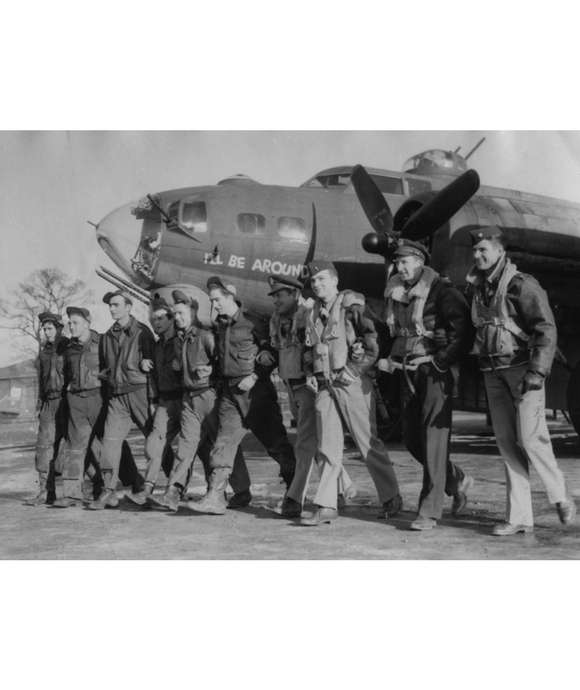
Masters of the Air
Travel to Thorpe Abbotts and other landmarks of the Allied air war over Europe on this exclusive Museum tour.
Seth Paridon
Seth Paridon was a staff historian at The National WWII Museum from 2005 to 2020. He began his career conducting oral histories and research for HBO’s miniseries The Pacific and holds the distinction of being the first historian hired by the Museum’s Research Department. In the 12 years he was Manager of Research Services, Seth and his team increased the oral history collection from 25 to nearly 5,000 oral histories.
Cite this article:
MLA Citation:
APA Citation:
Chicago Style Citation:
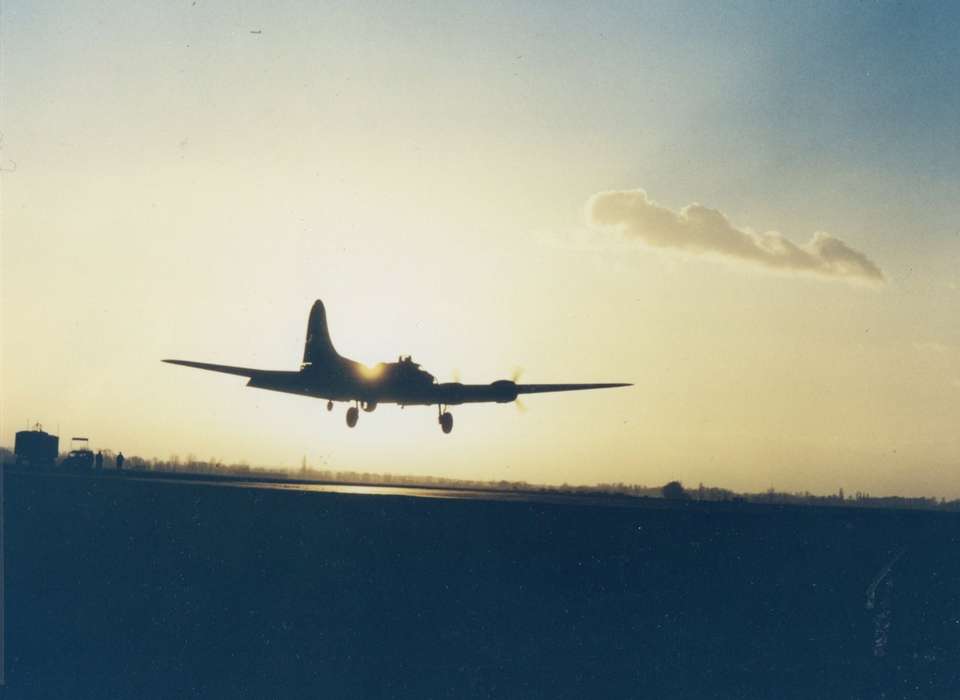
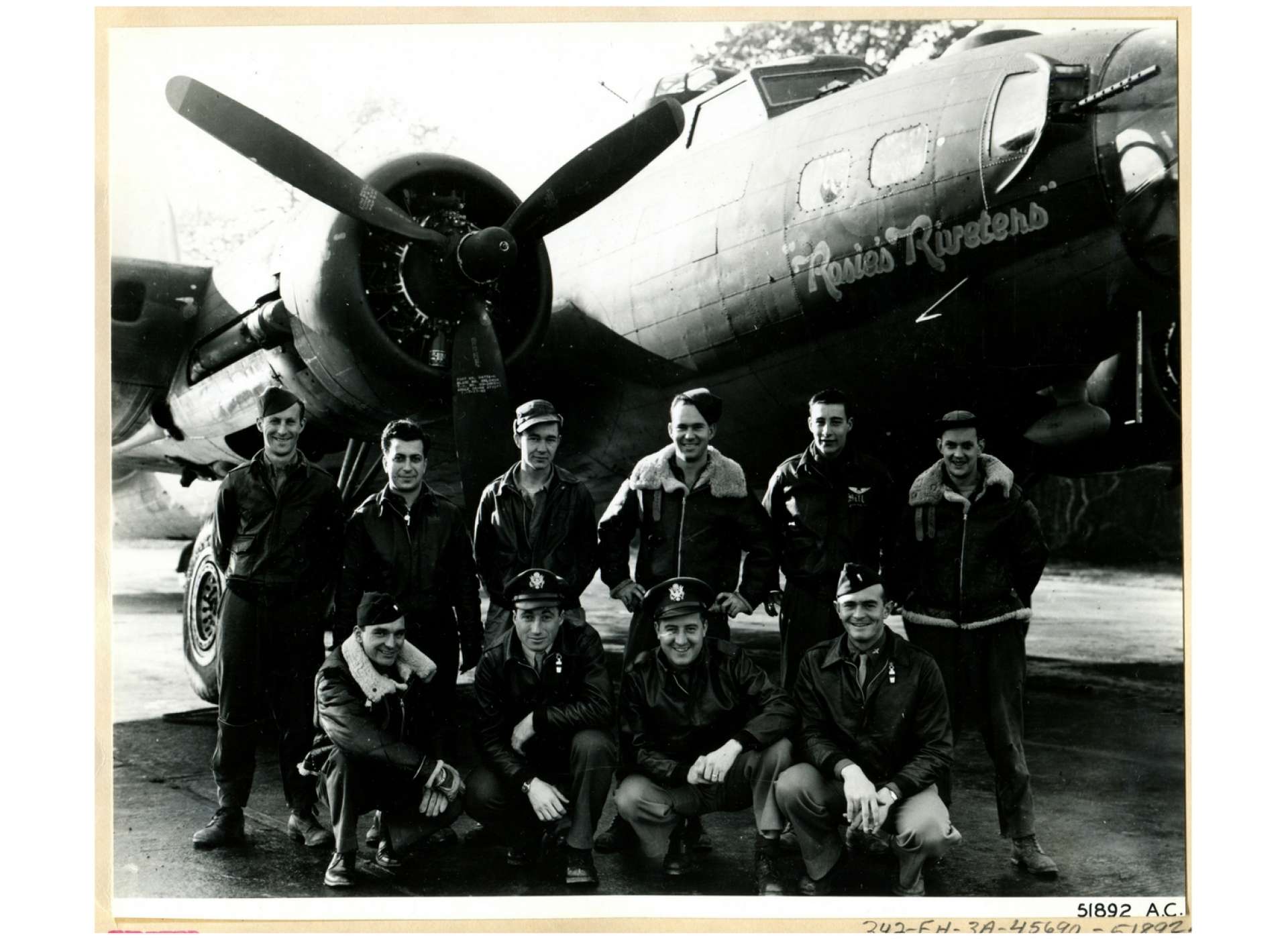
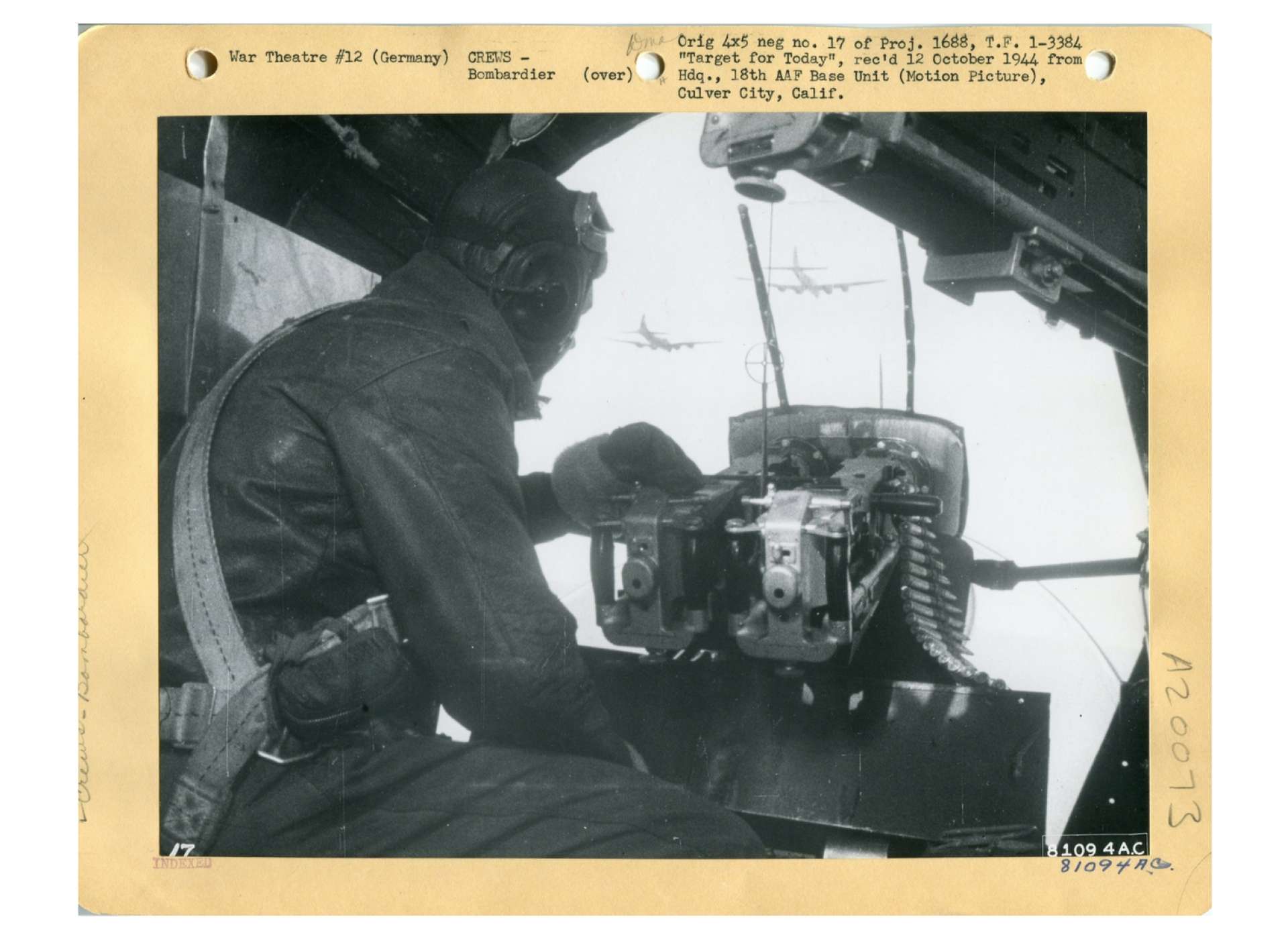
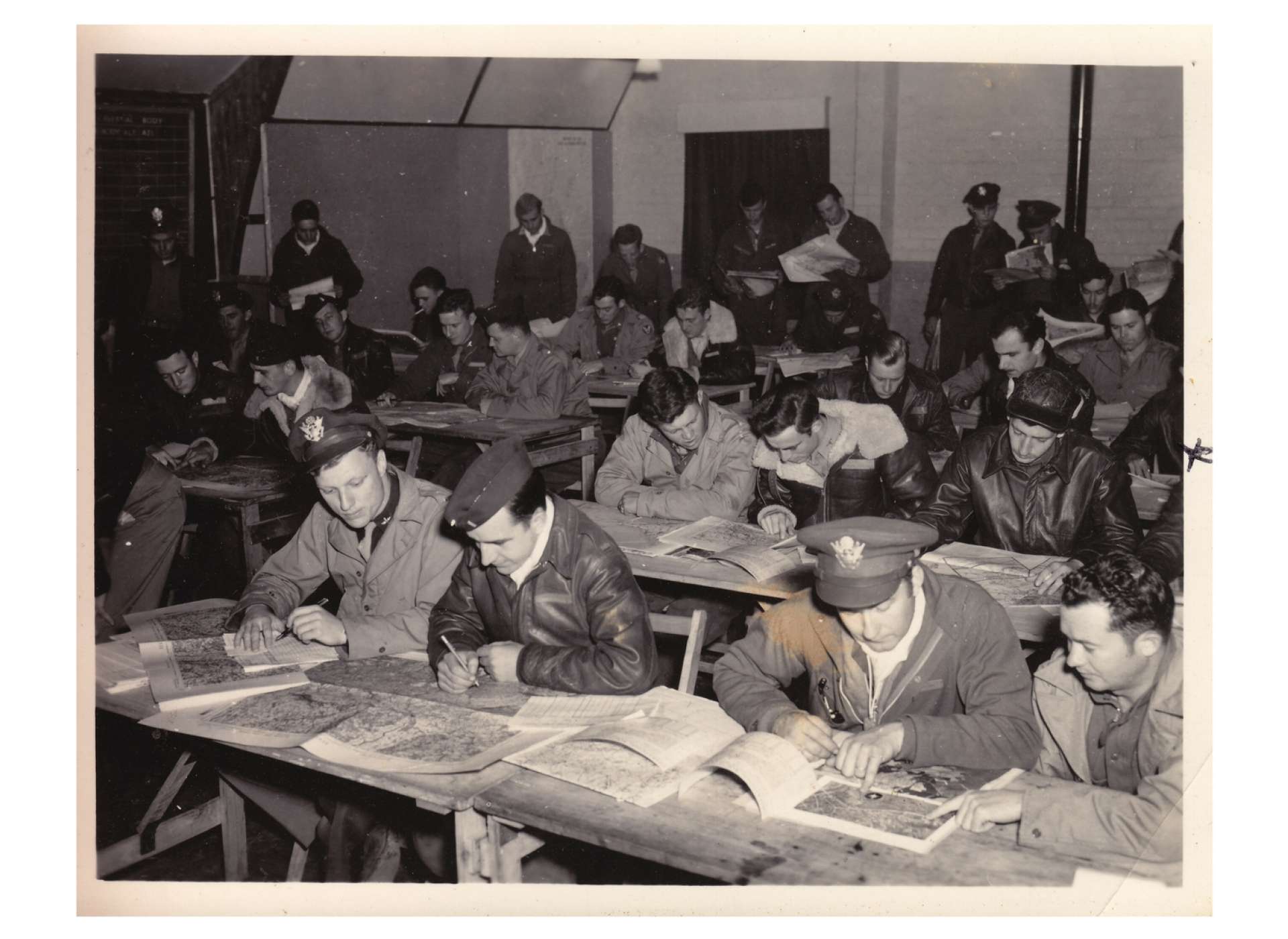
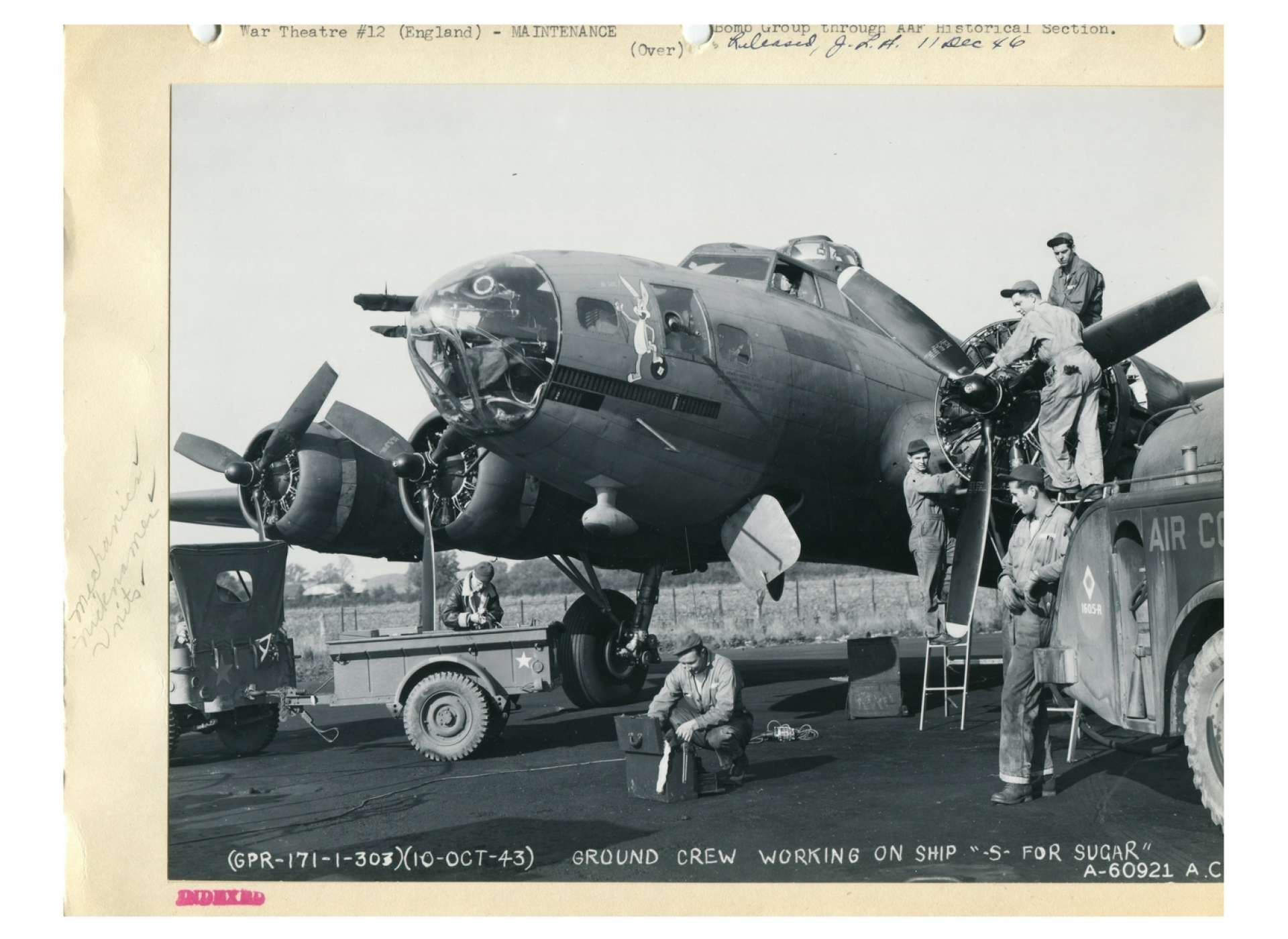

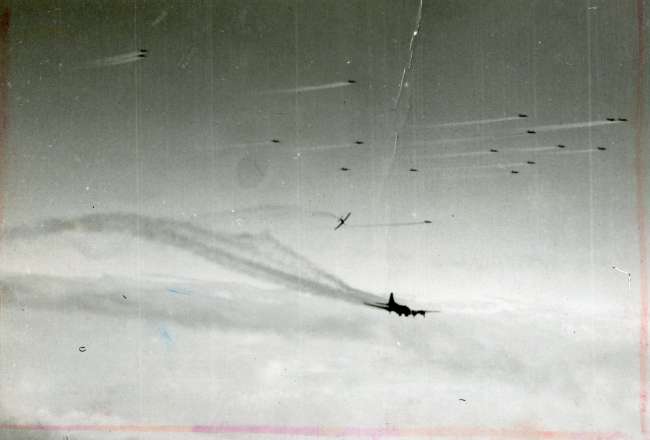
![Max Fuchs, New York City cantor, sings as Rabbi Sydney [sic] Lefkowitz, Richmond, VA, conducts the first Jewish services from Germany.](/sites/default/files/styles/max_650x650/public/2025-10/image1.jpg)






